Great Bear Lake Rainforest agreement is said to resolve conflict over logging in Canada’s coastal rainforest
Update: A May 12, 2021 CBC article is entitled: I”nvestigation finds biodiversity of old growth forests at risk in Port Alberni: Conservationists are calling for action from government to protect old growth trees.”
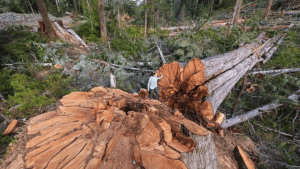
Image from May 12, 2021 CBC article, featured at post you are now reading. Caption: Conservationists with the Ancient Forest Alliance say old-growth forests like this one are crucial to the overall health of ecosystems. (Submitted by TJ Watt)
An excerpt reads:
“BCTS’s FSP (forest stewardship plan) did not meet the legal objective, and it should not have been approved. We looked at the remaining forest in the watershed and found there are some ecosystems that could be at risk if more logging takes place in them,” said Kevin Kriese, the chair of the Forest Practices Board.
The report comes three years after the Ancient Forest Alliance (AFA), together with members of the Port Alberni Watershed Forest Alliance, exposed the clearcutting of some of Canada’s grandest remaining old-growth forests and biggest trees in the Nahmint Valley.
*
I owe many thanks to Planet Dentistry at St. Clair Ave. and Avenue Road for directing may attention to a front-page article in the Feb. 1, 2016 Globe and Mail, the contents of which I will outline below.
I learned about Planet Dentistry when I belonged to a business networking group many years ago. I would not found out about Planet Dentistry in any other way.
The latter dental office serves my needs much better than a previous dental office, that I had been visiting several times a year for a couple of decades, where on one occasion I waited over a month for surgery to address an abscessed tooth. I know that if I ever get an abscessed tooth in the future, it will be dealt with in a week or less – as opposed, say, to the five or six weeks that I waited on a previous occasion.
After the latter incident, I was on my way to a new dentist. My quest led me to Planet Dentistry where the quality of care has been of the highest quality.
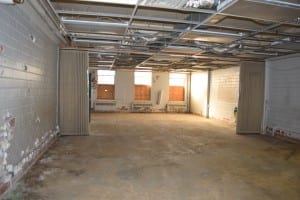
Detail from interior of Small Arms Building in Lakeview in Mississauga, December 2015. Jaan Pill photo
Globe and Mail
I used to subscribe to the online version of the Globe and Mail, but stopped. I do, on occasion, however, still buy the print version on occasion. I have come across some great information as a result. By way of example, a Globe article about mindfulness meditation years ago has had a highly positive impact on my life.
On May 4, 1987, I also came across another article, this time in the print version of the Toronto Star, that changed the trajectory of my life. I would not be writing this article now, had I not encountered the article.
The day I read the article, I had not been planning to read the Toronto Star. However, a neighbour left her copy for me after she had read it. What a gift that was! In the years that followed, I had the opportunity to help many other people. It was a gift that kept on giving, year after year.
By way of getting back to my story, I am pleased to add that I would not have come across the print version of the Feb. 1, 2016 issue of the Globe and Mail had I not had a scheduled appointment at Planet Dentistry. I saw the front section of the Globe at once on a coffee table by the reception area as soon as I walked in the door. I thought, “What a story!”
Great Bear Rainforest
The online version of the Feb. 1, 2016 Globe and Mail article is entitled: “Final agreement reached to protect B.C.’s Great Bear Rainforest.” That’s the article that caught my attention at once I would have missed this great arcticle had I not seen the paper on the coffee table.
The print version is entitled: “Battle to protect Great Bear Rainforest ends with broadly supported agreement: Province, First Nations, environmentalists and industry all part of crafting accord.”
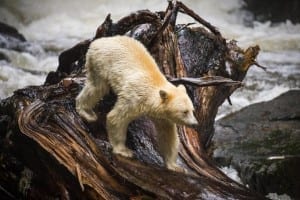
The photo is from a Feb. 1, 2016 Globe and Mail article entitled: “Final agreement reached to protect B.C.’s Great Bear Rainforest.” The caption reads: “A ‘spirit bear’ hunts for salmon near Klemtu, B.C., Aug. 29, 2015 (John Lehmann/The Globe and Mail).”
The opening paragraphs read:
“The 20-year battle to protect the Great Bear Rainforest – the largest coastal temperate rainforest on the planet – is over, with the B.C. government announcement on Monday of an agreement with environmentalists, forest companies and First Nations.
“The deal, which will be enshrined in legislation this spring, applies to a stretch of 6.4 million hectares of the coast from the north of Vancouver Island to the Alaska Panhandle. It promises to protect 85 per cent of the region’s old-growth forests, with logging in the remaining 15 per cent subject to the most stringent commercial logging standards in North America.
“ ‘I’m pleased to announce we have reached this landmark agreement,” B.C. Premier Christy Clark told a news conference in Vancouver. “We celebrate what hard work, tenacity and strength of purpose can achieve when we work together.’
“Representatives for the four partners gathered for a ceremony in the Heiltsuk community of Bella Bella on Friday to mark the completion of an accord that reaches far beyond the original objectives of protecting ancient forests and the home of the unique white-furred black bear known as the Spirit Bear.
“The final agreement also recognizes aboriginal rights to shared decision-making and improves economic opportunities for the 26 First Nations that reside in the region with a greater share of timber rights and $15-million from the province.
“In Bella Bella’s school gymnasium, hereditary chiefs wearing their regalia of button blankets and ermine-trimmed headdresses danced and a chorus of children sang to welcome Premier Clark and the chief architects of the deal.”
[End of excerpt]
Key players in Great Bear Rainforest deal
An accompanying Feb. 1, 2016 Globe article is entitled: “Key players in Great Bear Rainforest deal find common ground.”
An additional Feb. 1, 2016 Globe article is entitled: “Great Bear Rainforest pact is a ‘jewel in the crown’ of Canada’s protected areas.” The article concludes with a complaint by the Business Council of B.C. regarding the scope of the agreement.
An earlier, June 15, 2015 Globe article is entitled: “Saving the Great Bear Rainforest with good marketing.”
A Feb. 1, 2016 CBC article regarding the agreement reads: “Great Bear Rainforest agreement creates ‘a gift to the world’: An area bigger than Vancouver Island is now under complete protection from industrial logging.”
Conflict resolution
An online PDF document by Patrick Armstrong is entitled: “Conflict Resolution and British Columbia’s Great Bear Rainforest, Lessons Learned 1995-2009: How multi-interest governance led to resolution of a global conflict over logging in Canada’s coastal temperate rainforest.”
Conflict resolution, branding, and marketing have made for a potent combination, from what I have read, in bringing the B.C. Great Bear Rainforest story to a satisfactory and inspiring conclusion.
Early history
Ever since visiting a portable sawmilling and wood repurposing project near the Small Arms Building in Mississauga on Dec. 11, 2015, I have been reading about the history of the forest industry in the central and north-coast regions of British Columbia.
The visit to the above-mentioned sawmilling project reminded me at once – in a striking, vivid flashback – to the occasion in the early 1970s when I spent a year working and travelling in the interior and west coast of British Columbia as described in a previous post:
A related earlier post is entitled:
As it turns out, a person really can’t get away from what we like to call civilization
Memories
Memories are malleable as I’ve noted previously:
Memories are malleable – capable of being stretched or bent into different shapes
Company bus
Some things I remember about those years; some details I have forgotten.
When I worked on a mountainside between Terrace and Kitimat in British Columbia, each morning I was picked up by a company bus somewhere near Terrace. Exactly where we as workers were picked up I don’t remember.
I do remember that during my employment as a chockerman, I lived in a tent by a mountain stream on a mountainside near Terrace. The exact location is now totally lost to memory. I do remember details about the bus ride, however.
Our bus driver was a tough, stocky, good-natured character in his late fifties or early sixties who began each day inebriated. I don’t know if he drank all day, but it was clear he was not a fan of sobriety. We drove mainly along a logging road. A driver’s task is to stay on the road and clear of ditches. I was never worried about my safety sitting on the bus with a less than sober driver. Such things did not occur to me. Anyway, we never had an accident.
On one occasion, the crew needed someone to haul some equipment up a tall and sturdy tree to hook the overhead yarding system to a new position. The logger who drove the bus stepped forward, took hold of the equipment, which I estimate must have weighed about fifty pounds, and proceeded to climb the tree. I didn’t know what to expect. If I recall correctly, he was wearing climbing spikes jutting out from the inside of each ankle, so he could get a good grip on the tree as he climbed.
The sight of him climbing up the tree – I was reminded of a squirrel running up a tree at full speed – was a sight that has stayed firmly embedded in my mind. It took my breath away. I had not realized, until that moment, that our bus driver had spent his working life running up and down mountainsides, and running up and down trees. For him the climb up the tree was like a stroll in the park. No sweat.
I also realize, as I look back, that my own contact with the B.C. forest industry, and with day to day life in the interior and northern coast, was a very fleeting one. I was a participant-observer in a passing scene; I was a reality tourist. By working in the bush, I learned many things about forestry work, but I was a visitor. I knew that what I saw and heard and learned was a fleeting glimpse and nothing more. I’m also aware that every stage of life, in all locations on the planet, are an occasion for what is occasionally called reality tourism.
That prompts me to think, now at my leisure, of all of the things that were happening in that region of the world, then and in the years before, during, and after the early 1970s.
Much change has occurred in all of the regions where I worked and travelled in those years. Consequently, I’ve recently made a point of learning as much as I can about the history and current status of the B.C. forestry industry.
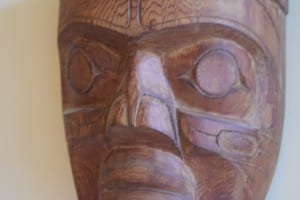
A memento from early 1970s travel in northern British Columbia is a cedar mask purchased in Hazleton, B. C. The quality of the design, in my view, is vastly superior to carvings typically sold at tourist stores in Vancouver in those years. Jaan Pill photo
Clearcutting the Pacific Rain Forest (1998)
Clearcutting the Pacific Rain Forest: Production, Science, and Regulation (1998) by Richard A. Rajala is the kind of study about the B.C. forest industry that I like to read.
Clearing the Pacific Rain Forest (1998) is based on Rajala’s Ph.D. dissertation at York University. The Acknowledgements mention that H.V. Nelles served as a member of the dissertation committee. I was highly impressed with a book that H.V. Nelles co-authored, namely The River Returns: An Environmental History of the Bow (2009). The exquisitely crafted structure of the latter book reminds me of a similar, well-crafted structure that serves a central feature of a study by Luigi Tomba entitled The Government Next Door (2015).
Rajala’s 1998 study brings a commendable level of attentiveness to nuance and complexity to the task at hand. The Introduction extols (p. xxi) the value of exploring “the relationship between resource and labour exploitation under corporate management. This contributes to studies that consider ecological, technological, organizational, and regulatory processes separately, instead of analyses that emphasize their complex interplay.”
Having worked on a green chain at a sawmill, and as a chokerman at an overhead logging operation on a mountainside, I found the first chapter of Rajala’s study of much interest.
Industrialization of forestry
The first chapter focuses, as the author notes (pp. xxi-xxii), on mechanization, “a process that brought a steady increase in the capacity of logging operators to exploit both workers and nature. After the introduction of steam power in the late nineteenth century, with the exception of the Depression years when market conditions encouraged adaptation of the caterpillar tractor to selective harvesting, logging machinery fostered clearcutting. The main focus is on the technologies associated with overhead logging, a technique introduced in the first two decades of the twentieth century to speed the movement of logs from where they lay in the woods to railway lines for transportation to sawmills. Overhead systems intensified corporate control over the work of loggers, and the post-World War II development of mobile equipment and automatic grapple technology capped industry progress in the creation of a factory-like exploitation process.”
In the forty-five years that followed my one year of work in the B.C. wilderness, the role of the green-chain worker has in some cases been replaced by computer-operated lumber selection systems, while the role of the chockerman has in some cases been replaced by automatic grapple technology. On occasion, machines have taken over the task of the human tree faller who had the task of cutting down trees in the past. As well, some selective logging is now done with the aid of helicopters, a procedure that retains individual trees and stands of trees within the harvest site.
Rajala’s 1998 study offers a useful and informative introduction to the technological changes that have occurred in the B.C. forestry industry. I would not have started to read about such topics, had I not encountered a portable sawmilling operation at the Small Arms Building in Mississauga in December 2015.
From reading about the history of the emergence of logging engineering in British Columbia between 1880 and 1965, I would really not have imagined that such a thing as the recently announced Great Bear Rainforest agreement would ever be possible.
Updates
A Feb. 1, 2016 The Tyee article is entitled: ” ‘Solutions Are Possible’: Great Bear Rainforest Land-Use Deal Reached: Not everyone ‘warm and fuzzy’ about pact, which protects 85 per cent of forest from logging.”
The article notes:
“Art Sterritt, who was executive director of the Coastal First Nations until he retired in September, said that the agreements are an important step but not the end of the path.’
“‘We don’t get as warm and fuzzy as others,’ he said. ‘Coastal First Nations are always going to be there, and there are always going to be tweaks. Land use planning never ends.'”
A Feb. 8, 2016 Globe and Mail article is entitled: “Small deal, big impact.”
Comment
The above-mentioned Feb. 8, 2016 article laments the success of PR-savvy ENGOs (environmental non-government organizations) in driving the Great Bear Rainforest deal.
By way of a comment regarding the above-noted article, I would note that in a June 3, 2014 NPR interview, New Yorker writer Evan Osnos observes that Chinese propaganda officials learned lessons from the history of Western public relations culture: If you can sell sugar water by branding it as Coca-Cola, you can sell anything. These are PR lessons that corporations, governments, and ENGOs have learned to apply in pursuit of their own respective interests.
Additional updates
A March 26, 2021 Narwhal article is entitled: “The Fairy Creek blockaders: inside the complicated fight for B.C.’s last ancient forests.”
An excerpt reads:
In a world wracked by climate change and species loss, the Fairy Creek blockaders occupy a desperate frontline. But like the speed of industrial logging, slap-dash movements like this one have consequences. Urgency saves trees but it can alienate allies. While environmentalists are making more effort to work with local First Nations that share similar goals, Fairy Creek is a reminder that it’s not always easy. Pacheedaht First Nation, whose territory includes the watershed, has long relied on old-growth logging. But the nation is at a crossroads when it comes to the future of its forests.
A Feb. 12, 2015 Globe and Mail Letter to the Editor from Steve and Susanne Lawson, Tofino, B.C., is entitled: “Protecting Forests.”
Among other things, the letter comments: “Everyone is lauding the GBR agreement, while the logging of old growth forests – a finite and irreplaceable ecosystem – goes on and on.”
As well: “There is nothing environmentally friendly about the ‘scientific logging,’ despite the media campaign to the public that Clayoquot was ‘saved.’ These groups are negotiating away people’s livelihoods, fishing, tourism, wildlife habitat and more, while Vancouver Island and the coast is still being ravaged and no one is objecting.”
A March 1, 2016 CBC article is entitled: “Wood highrises designed in B.C. are sustainable and safe: 18-storey UBC timber tower will be one of the tallest wood buildings in the world.”
An Aug. 10, 2016 CBC article is entitled: “Popular theory on how humans populated North America can’t be right, study shows.”
A Sept. 27, 2016 CBC article is entitled: “Prince William gets lesson in colonialism, cultural genocide at Black Rod ceremony: ‘The current Crown approach of deny and delay cannot continue,’ Grand Chief Ed John tells Prince William.”

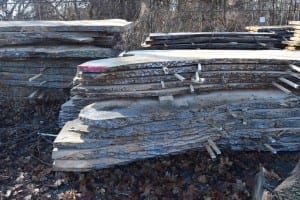
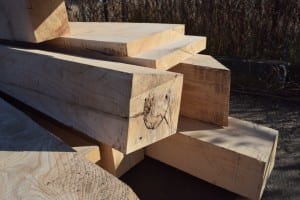
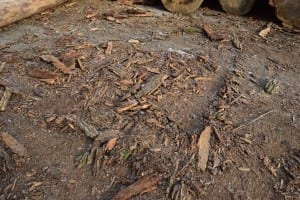
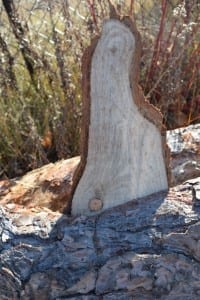
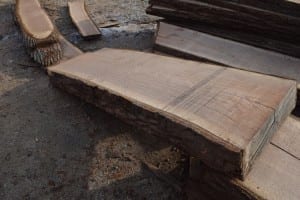
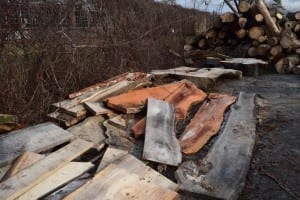
Leave a Reply
Want to join the discussion?Feel free to contribute!